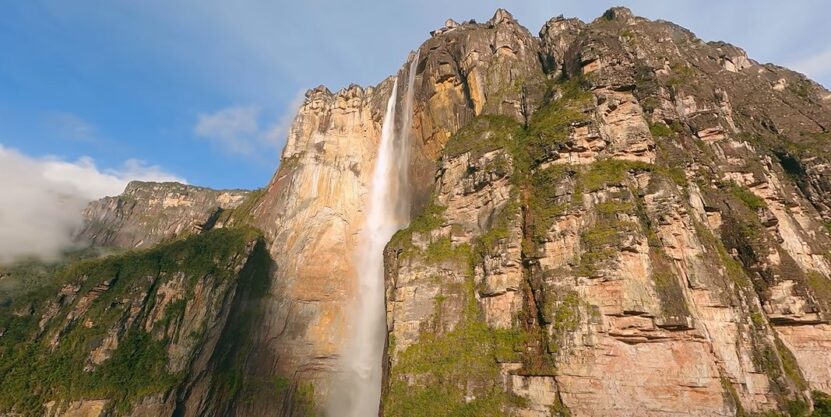Diving into the fascinating world of Angel Falls facts unveils a treasure trove of intriguing information about this natural wonder. As the world’s highest uninterrupted waterfall, Angel Falls has captivated the hearts and minds of adventurers, explorers, and nature enthusiasts alike.
In this article, we’ll delve into seven of the most interesting aspects of this awe-inspiring landmark, from its discovery to its role in popular culture and the unique geology that shaped it.
Prepare to be amazed as we uncover most amazing facts behind the breathtaking Angel Falls.
1. Discovered By The Westerners
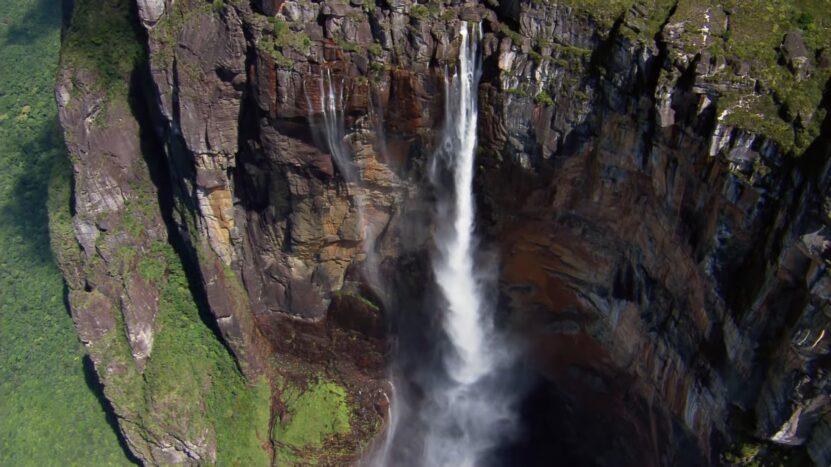
One of the most intriguing Angel Falls facts revolves around its discovery by Westerners.
Although indigenous Pemon people were well aware of the falls, it wasn’t until the 20th century that the waterfall gained international attention.
The credit for this discovery goes to American aviator Jimmy Angel, who stumbled upon the falls in 1933 while searching for a gold ore bed in Venezuela.
On October 9, 1937, Jimmy Angel, along with his wife Marie, their friend Gustavo Henry Gardener, and a local named Miguel Delgado, embarked on an expedition to the falls.
They flew in Angel’s Flamingo monoplane, which crash-landed on top of the Auyán-tepui, the flat-topped mountain from which the falls plunge.
The group survived the crash and trekked for 11 days to reach civilization.
News of their dramatic adventure spread, and the waterfall was subsequently named “Angel Falls” in honor of Jimmy Angel.
The falls, known as “Kerepakupai Vená” in the indigenous Pemon language, meaning “waterfall of the deepest place,” soon captured the imagination of people around the world and became a sought-after destination for explorers and tourists alike.
2. Not Easy to Reach
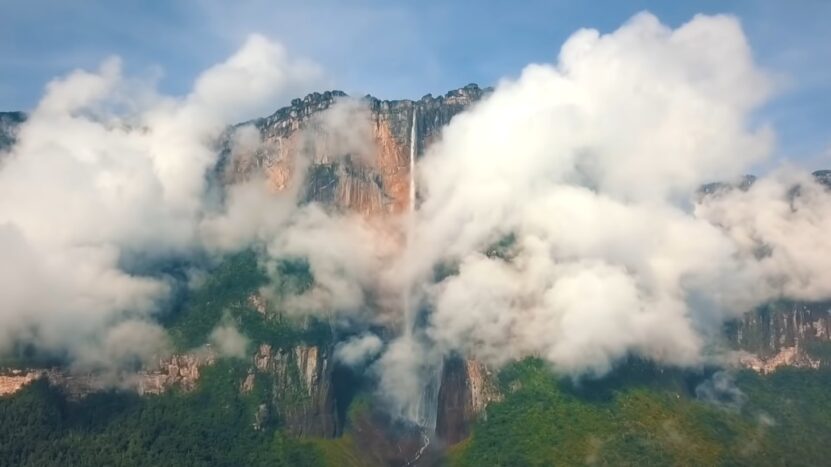
Reaching the Angel Falls location is not a simple task, which adds to its allure and mystique.
Nestled deep within Venezuela’s Canaima National Park, the falls are situated in a remote area with limited access.
There are no roads leading directly to Angel Falls, making the journey an adventure in itself.
Typically, visitors begin their trip by flying to Canaima, the closest village to the falls.
From there, they embark on a river expedition, traveling by motorized dugout canoe known as a “curiara.”
The journey on the Carrao and Churun rivers can take several hours or even days, depending on the water level and the chosen route.
Upon reaching the base camp near the falls, visitors continue on foot, hiking through the dense rainforest and navigating rugged terrain.
The hike may take several hours and can be physically demanding, but the reward of witnessing the breathtaking sight of Angel Falls up close is well worth the effort.
Due to the challenging nature of the journey and the need for specialized equipment and knowledge, visitors often opt for guided tours led by experienced local operators.
These tours not only ensure a safe and smooth experience but also provide invaluable insights into the region’s history, culture, and ecology.
3. Height of This Attraction
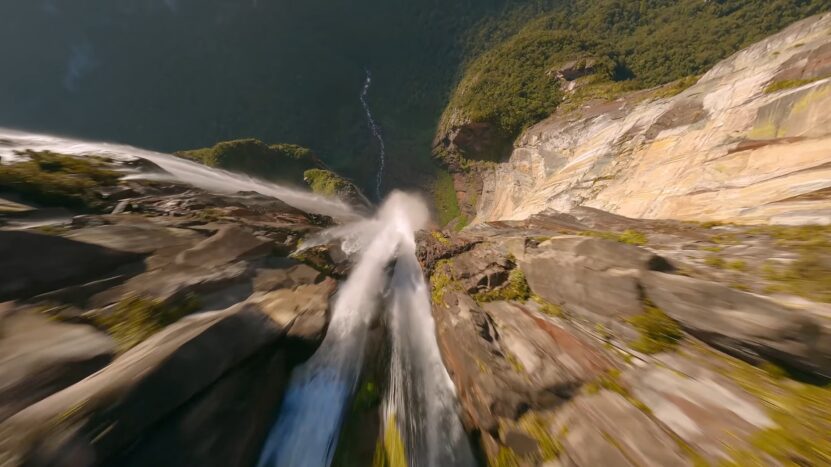
One of the most captivating Angel Falls facts is its staggering height, which sets it apart from other waterfalls around the world.
With an astounding height of 979 meters (3,212 feet) and a plunge of 807 meters (2,648 feet), Angel Falls holds the title of the world’s highest uninterrupted waterfall.
The water cascades down the side of the Auyán-tepui, a flat-topped mountain in Venezuela’s Canaima National Park, before plummeting into the Devil’s Canyon below.
The sheer height of Angel Falls is nearly 15 times that of the famous Niagara Falls, and it is more than twice as tall as the Empire State Building.
This immense height creates a mesmerizing sight, as the water often turns into a fine mist before reaching the bottom, giving the falls an ethereal, otherworldly appearance.
This awe-inspiring natural wonder has captivated countless visitors, explorers, and scientists, making it one of the most fascinating attractions on the planet.
4. Angel Falls Location, Venezuela
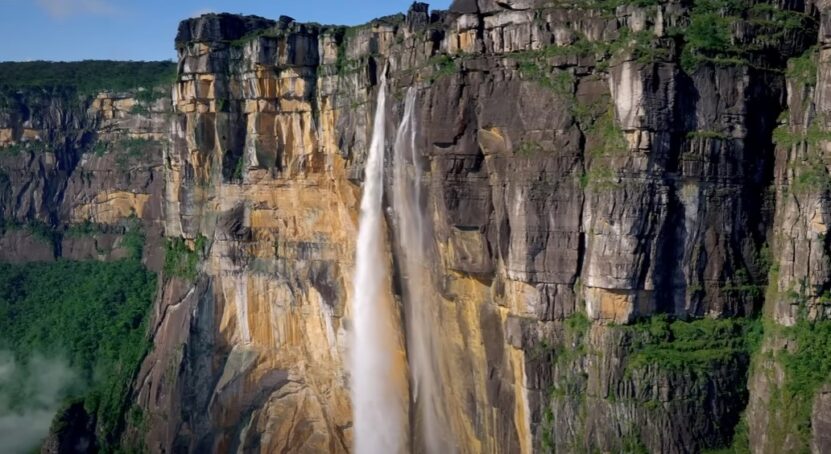
The world’s highest uninterrupted waterfall, is situated within the boundaries of Canaima National Park in Venezuela.
Covering an area of over 30,000 square kilometers (11,583 square miles), Canaima National Park is the sixth-largest national park globally and has been designated a UNESCO World Heritage Site for its unique geological formations, diverse ecosystems, and stunning natural beauty.
The park is nestled in the southeastern region of Venezuela, close to the borders of Brazil and Guyana.
It is home to a variety of flat-topped mountains called tepuis, with Angel Falls originating from the Auyán-tepui.
The waterfall boasts an impressive height of 979 meters (3,212 feet) and a plunge of 807 meters (2,648 feet), making it an awe-inspiring natural wonder that attracts adventurers, explorers, and tourists from all over the world.
Visitors who wish to witness the breathtaking sight of Angel Falls must embark on a challenging journey, typically starting with a flight to Canaima, the nearest village.
From there, a river expedition and a hike through the dense rainforest are required to reach the base of the falls.
The remote location and pristine beauty of Angel Falls make it a truly unforgettable destination within Canaima National Park.
5. Less Known Angel Falls Facts
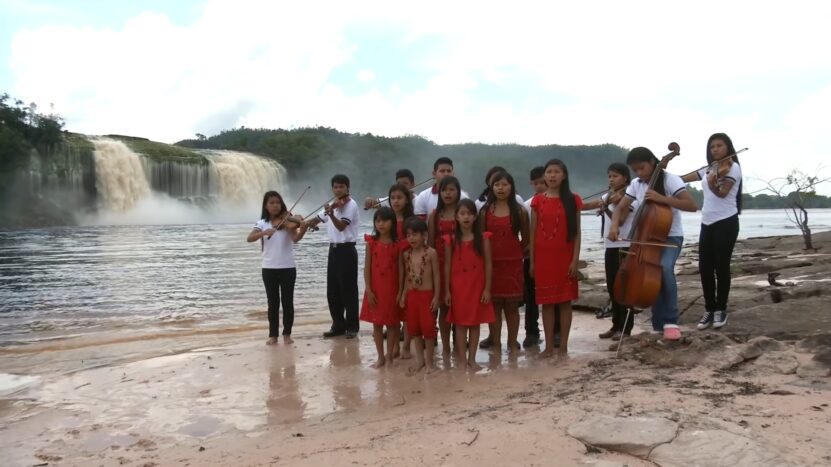
Some lesser-known Angel Falls facts, the late Venezuelan leader Hugo Chavez sought to promote the use of the waterfall’s original name given by the indigenous Pemon people centuries ago.
Known as “Kerepakupai Vená,” which translates to “the deepest place waterfalls,” this name reflects the ancient cultural heritage of the region and the deep connection the Pemon people have with their land.
Chavez’s proposal aimed to recognize and respect the indigenous roots of Venezuela and the importance of preserving their traditions and history.
By promoting the use of the name “Kerepakupai Vená,” Chavez sought to foster a sense of national pride and acknowledge the invaluable contributions of the indigenous population to the country’s cultural identity.
While the name “Angel Falls” remains widely recognized and used internationally, many Venezuelans and visitors are becoming increasingly aware of its indigenous name and the rich history it represents.
6. Thrill Seekers
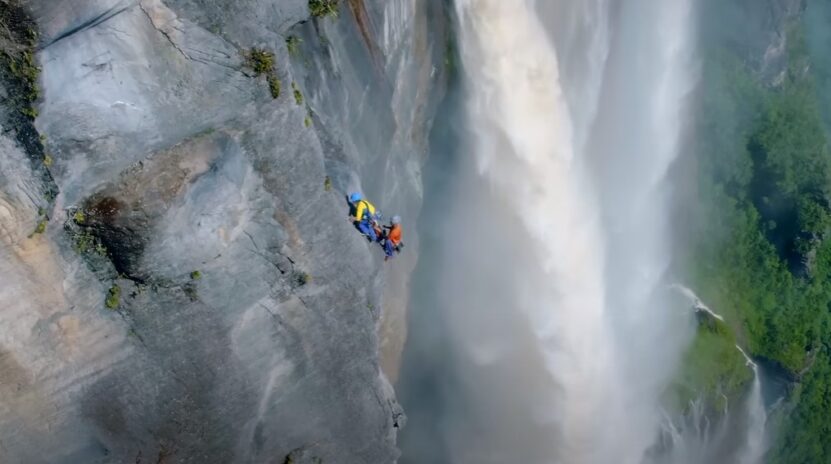
For thrill-seekers and adventure enthusiasts, merely witnessing the breathtaking sight of the famous Angel Falls might not be enough to satiate their craving for excitement.
The remote location and challenging terrain of the Canaima National Park present numerous opportunities for outdoor activities that push the boundaries of adrenaline and exploration.
Adventure seekers can embark on multi-day trekking expeditions through the dense rainforest, navigating rugged trails, and crossing rivers to reach the base of the falls.
Along the way, they may encounter unique flora and fauna, as well as stunning landscapes that are exclusive to this region.
For those who prefer to take to the skies, aerial tours are available, providing a bird’s eye view of the falls and the surrounding tepuis.
Flying over the majestic landscape offers an entirely different perspective on the grandeur of Angel Falls and the surrounding scenery.
Canoeing and kayaking adventures along the Carrao and Churun rivers provide an exhilarating way to experience the pristine waters and diverse ecosystems of the park.
These water-based activities allow visitors to immerse themselves in the natural beauty of the region while challenging their physical and navigational skills.
7. Rainy Season
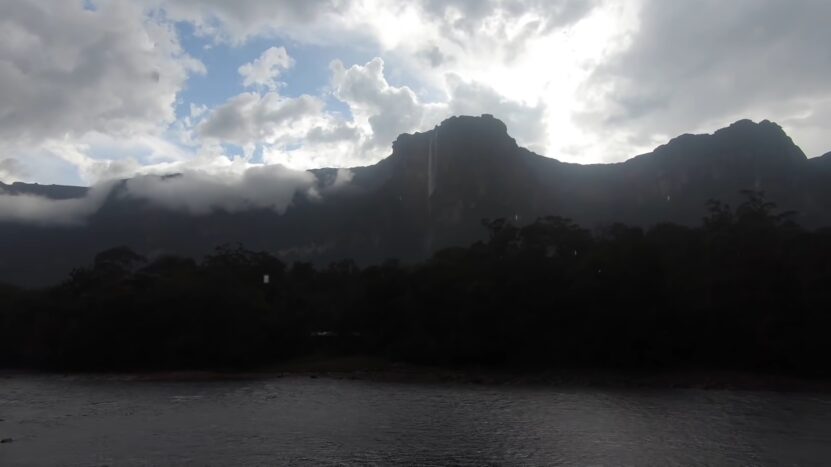
During the rainy season, the waterfall may split into two separate cascades.
This natural phenomenon occurs due to the increased volume of water brought on by the heavy rainfall in the region.
As the water level rises and flows over the edge of the Auyán-tepui, the additional force can cause the single stream to diverge, forming a spectacular twin waterfall display.
This seasonal transformation not only adds to the visual appeal of the falls but also demonstrates the dynamic nature of the environment in Canaima National Park.
The rainy season typically occurs between May and November, making it the ideal time for visitors to witness this unique occurrence at the world’s highest uninterrupted waterfall.
However, it is essential to keep in mind that the weather during this period may also make traveling to and exploring the park more challenging due to the rain and potential flooding.
FAQs
How Was Angel Fall Created?
It was formed by the erosion of the Auyán-tepui, a table-top mountain in the Gran Sabana region of Venezuela.
The Auyán-tepui is composed of sandstone and other sedimentary rocks that were deposited on the ocean floor hundreds of millions of years ago.
Over time, the tectonic movements caused the uplift of the region, and the erosion of the sandstone by wind, water, and other natural forces began.
What Animals Live Near Angel Falls?
List of some animals that are known to live near Angel Falls:
- Jaguar – a large predatory cat species, native to South America
- Puma – another large predatory cat species, native to the Americas
- Giant Otter – a large aquatic mammal species, native to South America
- Capuchin Monkey – a small, intelligent primate species, native to Central and South America
- Howler Monkey – a medium-sized primate species known for their loud vocalizations, native to Central and South America
- Spider Monkey – a large, arboreal primate species, native to Central and South America
- Toucan – a colorful bird species with a distinctive beak, native to Central and South America
- Macaw – a large, brightly colored parrot species, native to Central and South America
- Parrot – a medium-sized, brightly colored bird species, native to Central and South America
- Harpy Eagle – a large predatory bird species, native to Central and South America
Other animals that can be found near Angel Falls include tapirs, armadillos, anteaters, reptiles such as boa constrictors and anacondas, and a variety of amphibians such as poison dart frogs.
The rivers and streams surrounding the falls are also home to a variety of fish species, including the piranha.
These animals and their interactions with the environment in and around Angel Falls, contribute to a diverse ecosystem and make this area a fascinating destination for wildlife enthusiasts and nature lovers.
How Fast Is the Water Falling at Angel Falls?
The water falling at Angel Falls has an average speed of approximately 80 kilometers per hour (50 miles per hour).
The total height of Angel Falls is 979 meters (3,212 feet), and the water drops in a single uninterrupted stream from the top to the bottom of the falls.
Due to the force of the water and the height of the falls, the surrounding area is often shrouded in mist and the sound of the waterfall can be heard from a distance.
The impressive speed and power of the falling water make Angel Falls a popular tourist destination and a must-see natural wonder.

